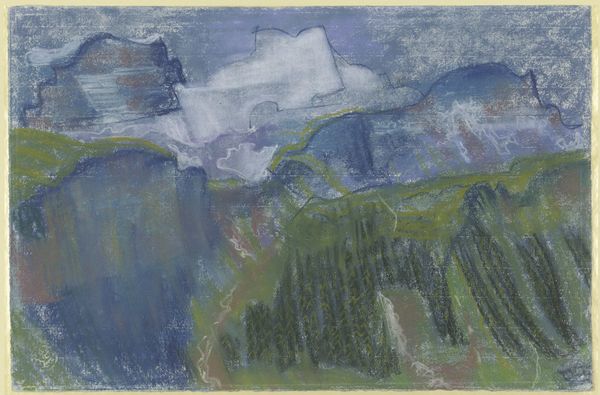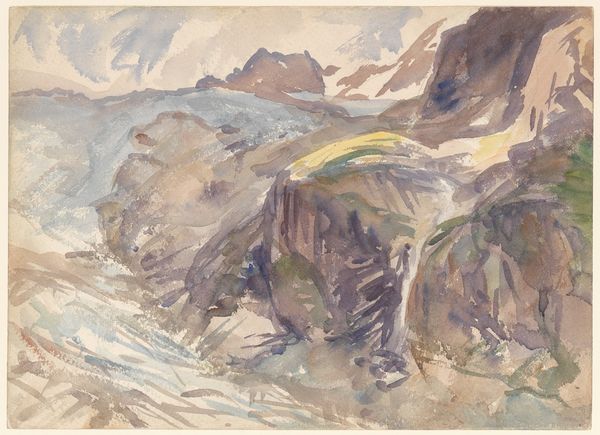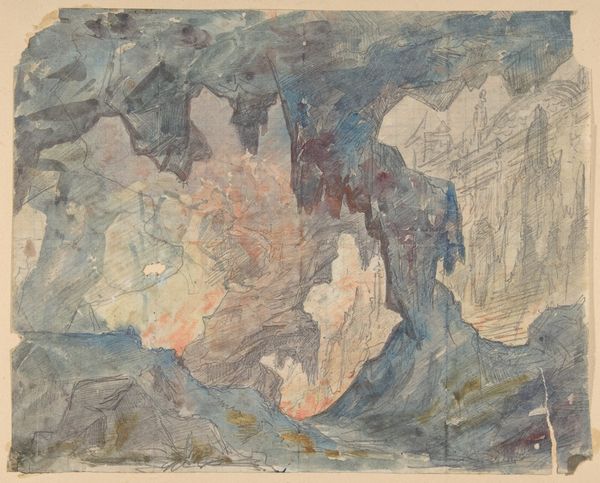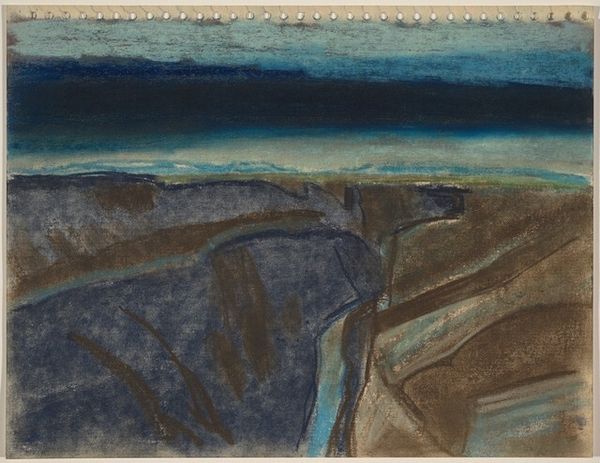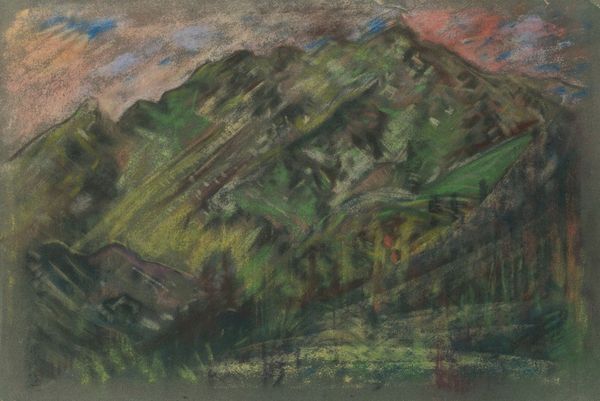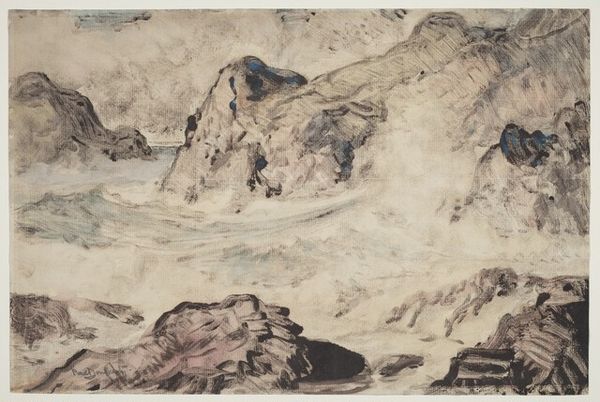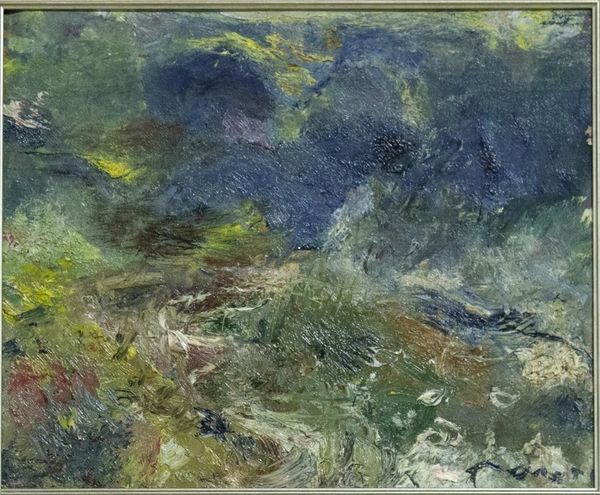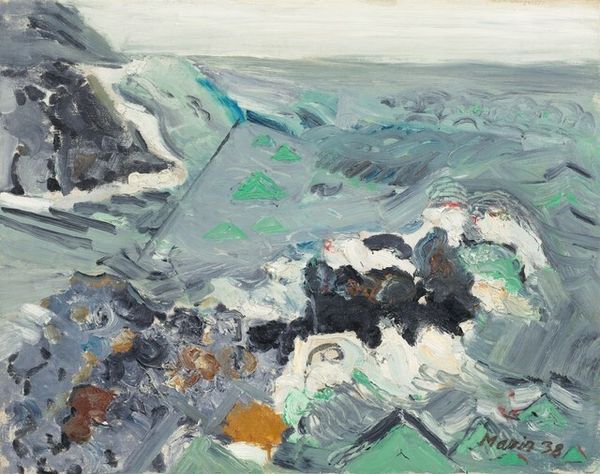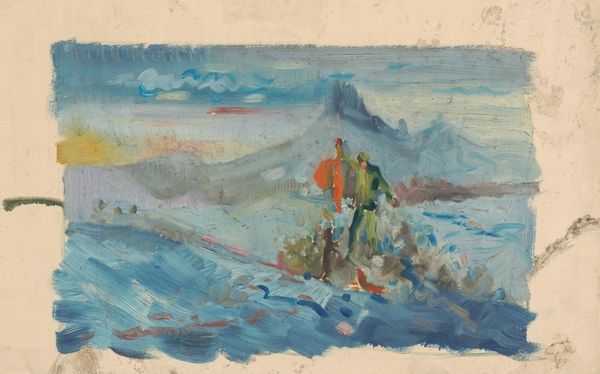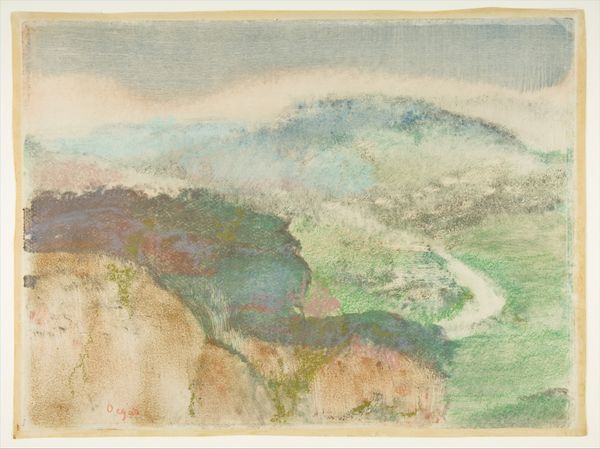
View of the Lac d’Espingo and the Cirque d’Espingo in the Pyrenees Possibly 1865
0:00
0:00
Dimensions: 284 × 467 mm (primary support); 295 × 477 mm (secondary support)
Copyright: Public Domain
Editor: This is Eugène-Emmanuel Viollet-le-Duc's "View of the Lac d’Espingo and the Cirque d’Espingo in the Pyrenees," possibly from 1865. It's a watercolor drawing on paper, currently at the Art Institute of Chicago. The first thing I notice is how calming it feels, despite the ruggedness of the mountains. What do you see in this piece? Curator: The peaks pierce the sky, acting as nature's cathedrals. Water, for centuries a signifier for both purity and the subconscious, cascades down the mountain. Think of the Romantic poets' obsession with nature as sublime, but also terrifying. Do you see a connection here? Editor: I see it now. The scale of the mountains, that feeling of awe... it’s definitely a Romantic idea. So the waterfall could be interpreted as a symbol, not just of nature’s beauty, but also its power and maybe a link to something deeper within ourselves? Curator: Precisely! The mountains themselves are a constant symbol across cultures of something enduring, of barriers, but also spiritual transcendence. Even the very composition—the lake reflecting the mountains—invites the viewer to consider duality. This invites viewers to explore their own personal and cultural associations with the imagery depicted. How does this resonate with you? Editor: That's fascinating, especially how water acts as a mirror, creating a layered sense of meaning. Now, I'm wondering about Viollet-le-Duc himself. He was an architect known for his restorations, not necessarily landscape painting. Curator: Indeed, and this perhaps offers us a different perspective. His architectural mind possibly translated the landscape into a kind of structure, imbuing it with his unique visual language, rooted in analysis of form and structure. Watercolors would have also been very efficient and practical when venturing outdoors to paint "en plein air." What did you discover? Editor: I learned to consider artmaking in context of how art can use symbolism to evoke universal truths, memories, or emotions. Curator: I have expanded how to view landscape beyond a simple depiction into one capable of carrying layered meaning and cultural associations.
Comments
No comments
Be the first to comment and join the conversation on the ultimate creative platform.
